Jinjin Wang
Defect Transformer: An Efficient Hybrid Transformer Architecture for Surface Defect Detection
Jul 17, 2022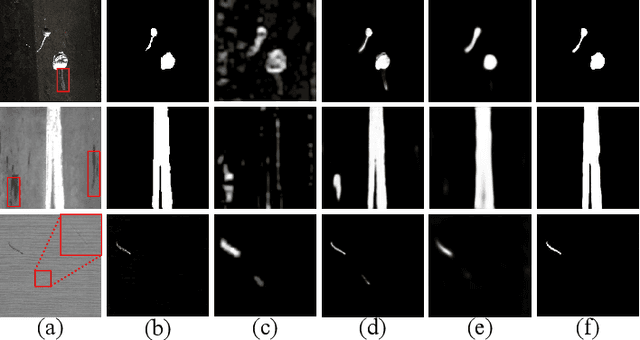
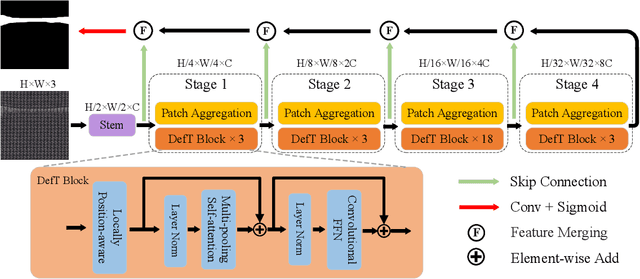
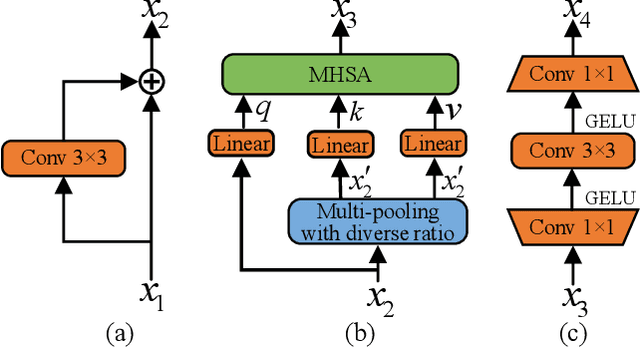
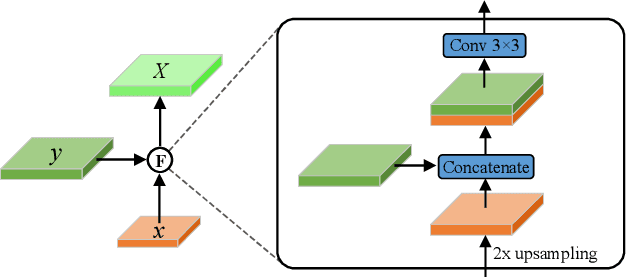
Abstract:Surface defect detection is an extremely crucial step to ensure the quality of industrial products. Nowadays, convolutional neural networks (CNNs) based on encoder-decoder architecture have achieved tremendous success in various defect detection tasks. However, due to the intrinsic locality of convolution, they commonly exhibit a limitation in explicitly modeling long-range interactions, critical for pixel-wise defect detection in complex cases, e.g., cluttered background and illegible pseudo-defects. Recent transformers are especially skilled at learning global image dependencies but with limited local structural information necessary for detailed defect location. To overcome the above limitations, we propose an efficient hybrid transformer architecture, termed Defect Transformer (DefT), for surface defect detection, which incorporates CNN and transformer into a unified model to capture local and non-local relationships collaboratively. Specifically, in the encoder module, a convolutional stem block is firstly adopted to retain more detailed spatial information. Then, the patch aggregation blocks are used to generate multi-scale representation with four hierarchies, each of them is followed by a series of DefT blocks, which respectively include a locally position-aware block for local position encoding, a lightweight multi-pooling self-attention to model multi-scale global contextual relationships with good computational efficiency, and a convolutional feed-forward network for feature transformation and further location information learning. Finally, a simple but effective decoder module is proposed to gradually recover spatial details from the skip connections in the encoder. Extensive experiments on three datasets demonstrate the superiority and efficiency of our method compared with other CNN- and transformer-based networks.
Noise and Edge Based Dual Branch Image Manipulation Detection
Jul 02, 2022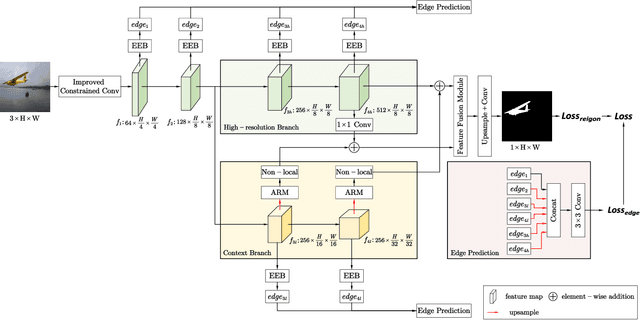
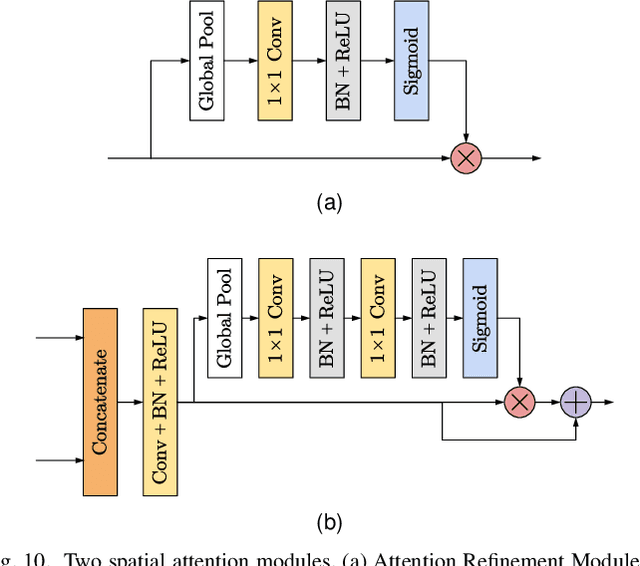
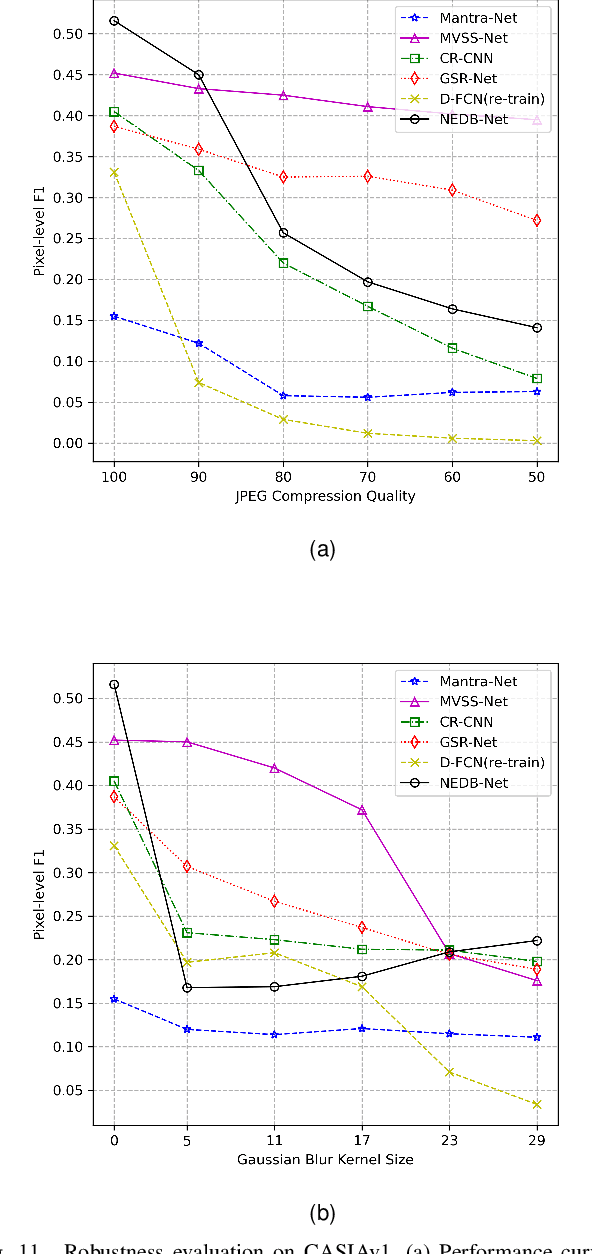
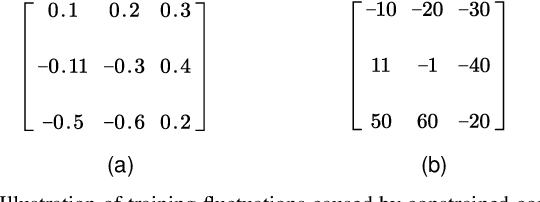
Abstract:Unlike ordinary computer vision tasks that focus more on the semantic content of images, the image manipulation detection task pays more attention to the subtle information of image manipulation. In this paper, the noise image extracted by the improved constrained convolution is used as the input of the model instead of the original image to obtain more subtle traces of manipulation. Meanwhile, the dual-branch network, consisting of a high-resolution branch and a context branch, is used to capture the traces of artifacts as much as possible. In general, most manipulation leaves manipulation artifacts on the manipulation edge. A specially designed manipulation edge detection module is constructed based on the dual-branch network to identify these artifacts better. The correlation between pixels in an image is closely related to their distance. The farther the two pixels are, the weaker the correlation. We add a distance factor to the self-attention module to better describe the correlation between pixels. Experimental results on four publicly available image manipulation datasets demonstrate the effectiveness of our model.
 Add to Chrome
Add to Chrome Add to Firefox
Add to Firefox Add to Edge
Add to Edge